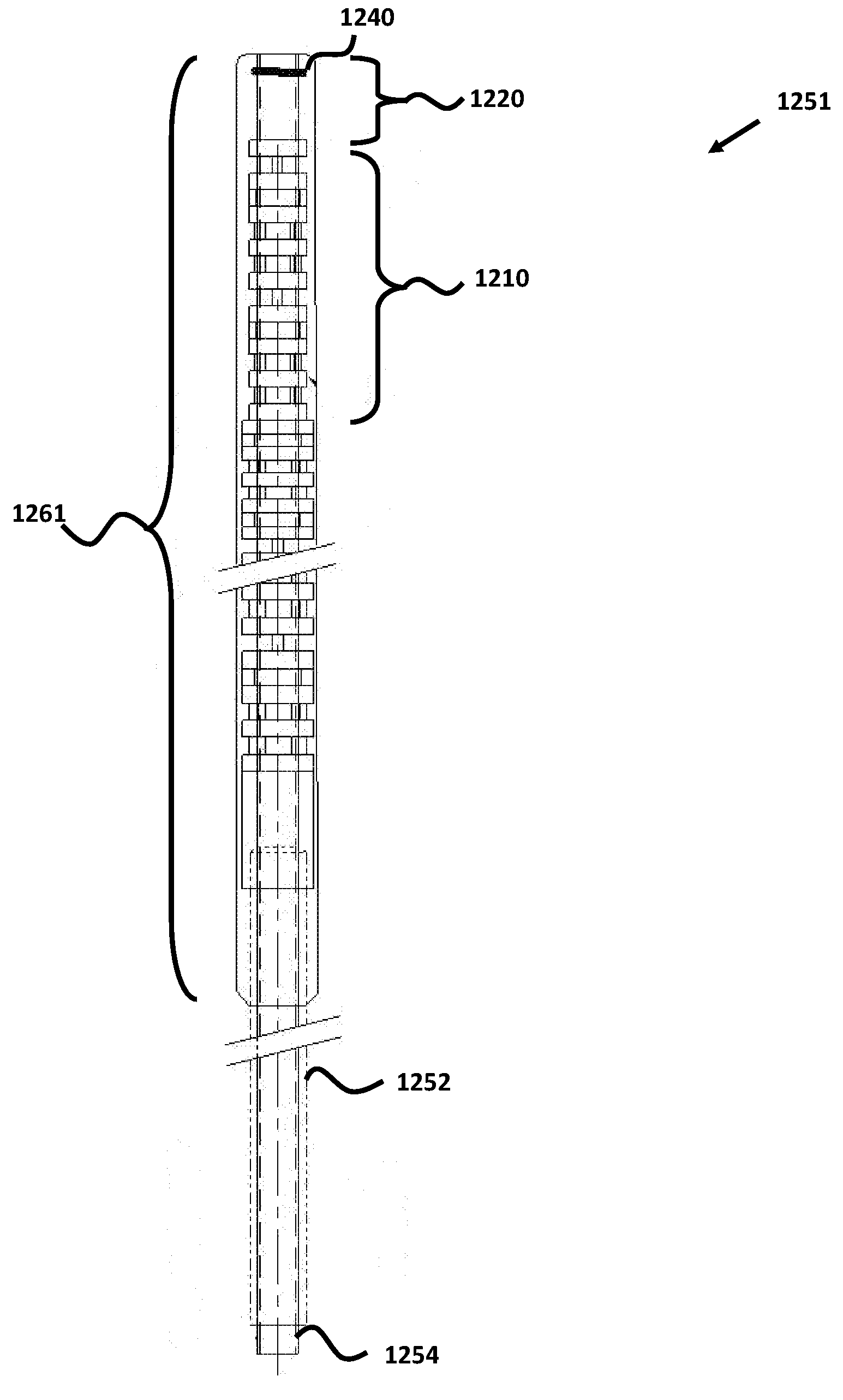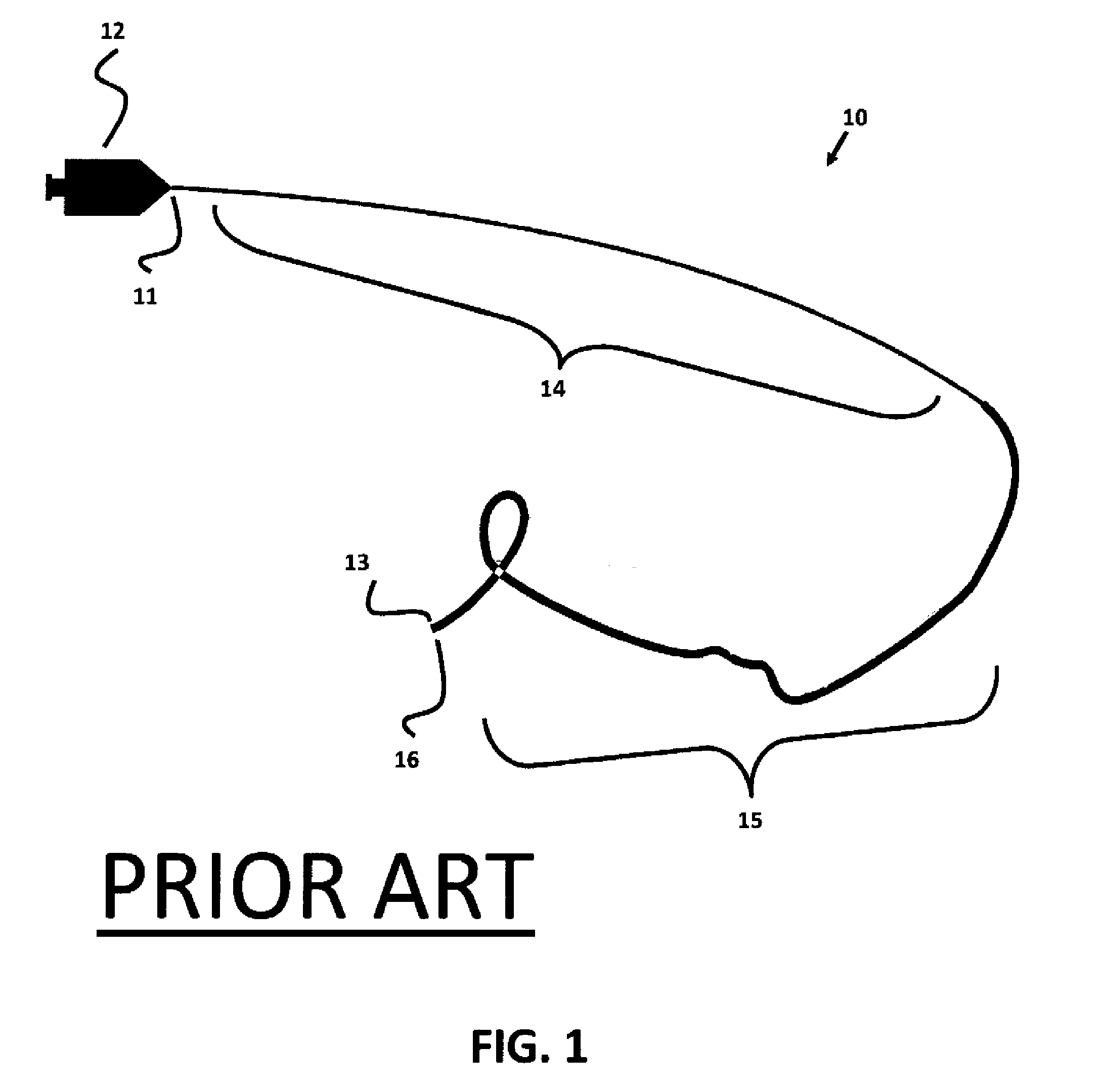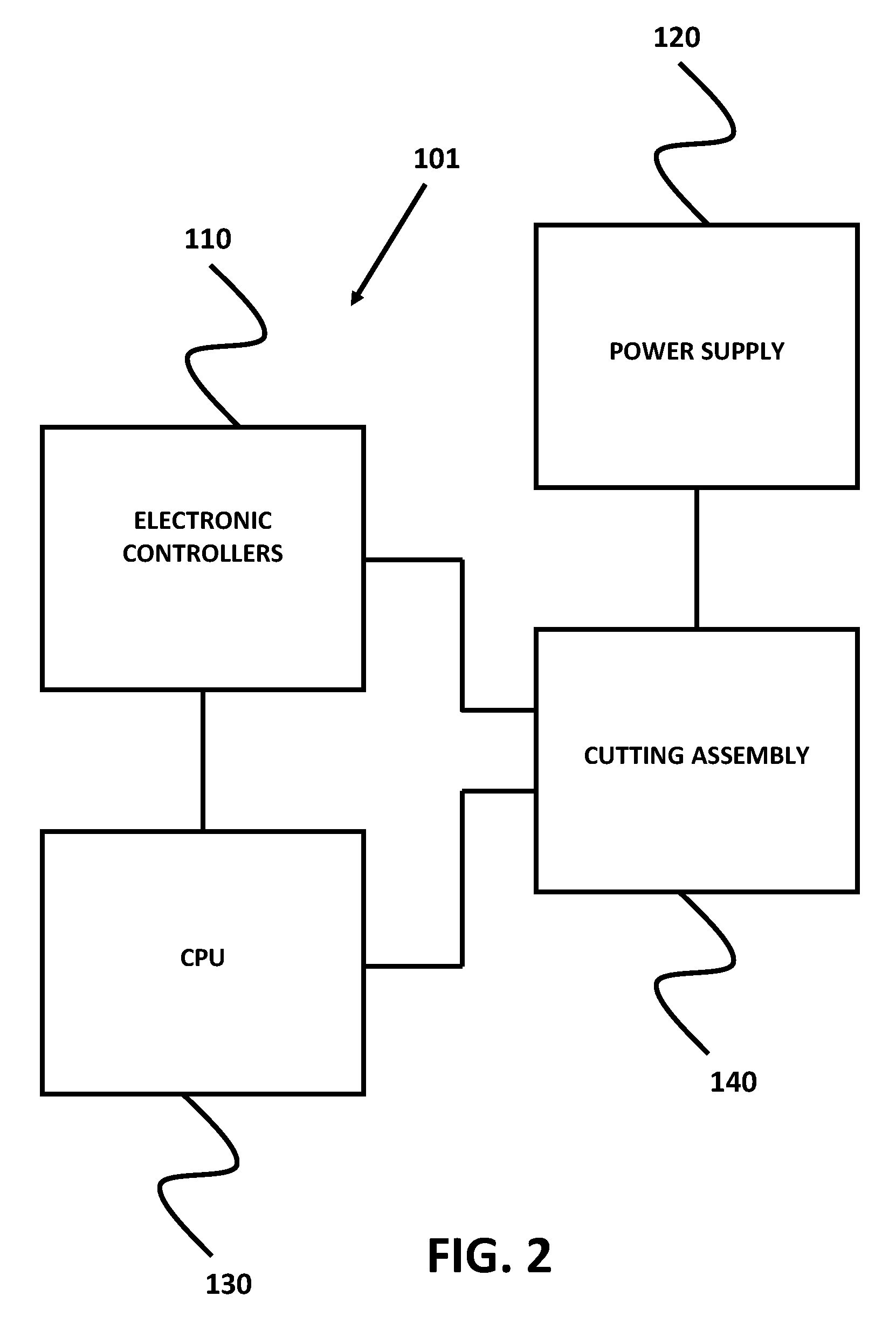Micro-fabricated Guidewire Devices Formed With Hybrid Materials
a technology of hybrid materials and guidewires, which is applied in the direction of guide wires, coatings, catheters, etc., can solve the problems of inability to manufacture guidewires and catheters with current technology machines (as described in published patents) and the inability to meet the requirements of use, and achieve the effect of insertions, and reducing the number of insertions
- Summary
- Abstract
- Description
- Claims
- Application Information
AI Technical Summary
Benefits of technology
Problems solved by technology
Method used
Image
Examples
example 1
[0149] A solid mono-filament stock material of metal or polymer, or other material.
[0150]Example 2: A solid mono-filament stock material that is a composite, for example, co-extruded with various polymer layers, or glass fiber filled or carbon fiber filled materials.
[0151]Example 3: A solid mono-filament material that may be a polymer that has been coated over a wire such as stainless steel.
[0152]Example 4: A tubular member made with any of the materials as above, where the interior lumen is not breached by the cutting of features or micro-fabrication.
[0153]Example 5: A tubular member as in Example 4 where the lumen is breached by the feature cutting.
[0154]Example 6: Any tubular member such as in Example 5 where there is also a wire disposed in the lumen.
[0155]Example 7: All of the above Examples 1 to 6, where the cut features (gaps or fenestrations) are substantially filled such that the outer surface is relatively smooth and the adjoining rings of the structures are essentially in...
example 8
[0156] As in example 7 where the matrix material completely encapsulates the cut material, including interior portions for tubular material forming an interspersed skeleton of stronger material inside a fluid sealed wall of the matrix material.
example 9
[0157] As in example 8 where some of the cuts or fenestrations are left open for fluid delivery or other purposes.
PUM
| Property | Measurement | Unit |
|---|---|---|
| length | aaaaa | aaaaa |
| length | aaaaa | aaaaa |
| outer diameter | aaaaa | aaaaa |
Abstract
Description
Claims
Application Information
 Login to View More
Login to View More - R&D
- Intellectual Property
- Life Sciences
- Materials
- Tech Scout
- Unparalleled Data Quality
- Higher Quality Content
- 60% Fewer Hallucinations
Browse by: Latest US Patents, China's latest patents, Technical Efficacy Thesaurus, Application Domain, Technology Topic, Popular Technical Reports.
© 2025 PatSnap. All rights reserved.Legal|Privacy policy|Modern Slavery Act Transparency Statement|Sitemap|About US| Contact US: help@patsnap.com



